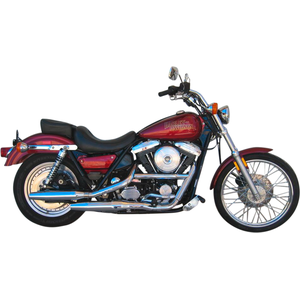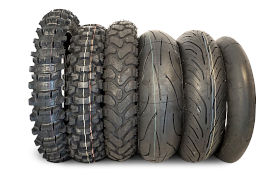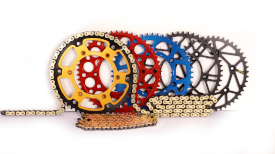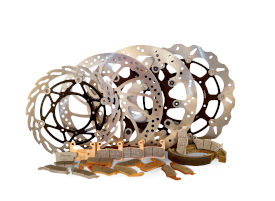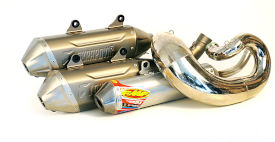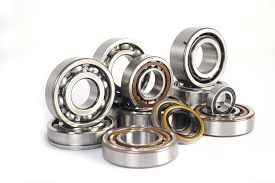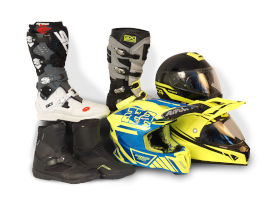The Timeless Roar: Harley-Davidson Dyna Super Glide (1982-1999) Review
Introduction
The Harley-Davidson Dyna Super Glide isn’t just a motorcycle—it’s a cultural artifact. Produced from 1982 to 1999, this generation of the Dyna platform bridged the gap between Harley’s traditional big-twin heritage and the evolving demands of riders seeking a more balanced, customizable cruiser. With its iconic V-twin rumble, minimalist styling, and rugged simplicity, the Dyna Super Glide became a canvas for riders to personalize while delivering the raw, unapologetic Harley experience. After spending time with a well-maintained 1998 model, it’s clear why this bike remains a legend in the cruiser world. Let’s dive into what makes it tick.
Design & Styling: Pure American Muscle
The Dyna Super Glide’s design is a masterclass in less is more. Its steel tubular frame, teardrop fuel tank, and chopped fenders scream "classic Harley," but with a subtle aggression. The 1990s models, like the 1998 example I rode, featured a slightly more refined aesthetic with cast wheels and dual front disc brakes (on later models), but the core DNA remained unchanged: a low-slung profile, wide handlebars, and that signature staggered dual-exhaust setup.
The seat height—ranging from 673 mm (26.5 inches) to 750 mm (29.5 inches) depending on the year—creates an accessible riding position for most riders. The mid-mounted footpegs let you stretch out, while the wide bars give leverage for easy maneuvering. Chrome accents on the engine covers and exhaust add just enough flash without veering into gaudy territory.
What’s striking is how honest the design feels. There’s no plastic fairing hiding the mechanics—just a proud display of the air-cooled V-twin and belt drive. It’s a bike that looks as good parked outside a dive bar as it does on a coastal highway.
The Heart of the Beast: Engine & Performance
At the core of the Dyna Super Glide is its Evolution V-twin engine, displacing 1,338 cc (81.6 cubic inches) in most models, though later years saw a 1,450 cc (88.5 cubic inches) variant. The air-cooled 45-degree V-twin is carbureted, fed by a single Keihin or CV carb depending on the year, and delivers power figures ranging from 48 HP to 68 HP. Torque, however, is where this engine shines: a stump-pulling 99 Nm (73 lb-ft) at just 2,350 RPM.
Twist the throttle, and the Dyna responds with a lazy, thunderous growl. Acceleration isn’t explosive—it’s deliberate and linear, pushing you forward with a wave of low-end grunt. The 5-speed transmission (a welcome upgrade from earlier 4-speeds) slots into gear with a satisfying clunk, and the belt final drive eliminates the maintenance hassles of a chain.
Top speed? Officially around 165 km/h (102 mph), but the Dyna feels most at home between 90-120 km/h (56-75 mph). The engine’s vibrations are part of the charm—a rhythmic massage at cruising speeds that turns into a buzz at higher RPMs. This isn’t a bike for speed demons; it’s for riders who savor the journey.
Handling & Ride Quality: Surprisingly Nimble
For a bike weighing 271–300 kg (597–661 lbs), the Dyna Super Glide handles with unexpected agility. The 39 mm front forks and coil-over rear shocks (pre-1994 models used twin shocks) soak up bumps decently, though rough roads will remind you this is a rigid-frame cruiser. The wide handlebars and low center of gravity make tight turns manageable, and the 1587 mm (62.5-inch) wheelbase strikes a balance between stability and flickability.
Braking performance varies by year. Early models had a single front disc, while later versions added dual discs. The 1999 model’s four-piston calipers provided confident stops, but even the single-disc setups are adequate for the bike’s pace. The real star is the tire setup—19-inch front and 16-inch rear—which gives the Dyna a planted feel mid-corner.
Ride comfort is typical of cruisers: fine for 2–3 hours, but you’ll want a break after that. The seat is firm, and the lack of wind protection becomes obvious above 100 km/h (62 mph). Still, it’s a small price to pay for the visceral connection to the road.
Competition: How Does the Dyna Stack Up?
The Dyna Super Glide’s main rivals in the 1990s included the Honda Shadow 1100, Yamaha Virago 1100, and Kawasaki Vulcan 1500. Here’s how it compares:
- Honda Shadow 1100: Smoother, quieter, and more refined—but lacks the Harley’s character. The Shadow’s V-twin is liquid-cooled and fuel-injected (in later models), offering better reliability but less soul.
- Yamaha Virago 1100: Lighter and nimbler, with a 70-degree V-twin that revs freely. However, its shaft drive feels less engaging than the Dyna’s belt.
- Kawasaki Vulcan 1500: A torque monster with superior comfort, but its bulkier design sacrifices the Dyna’s agility.
The Dyna’s edge? Authenticity. The Evolution engine’s vibrations, the belt drive’s whine, and the endless customization options make it a bike you feel rather than just ride. It’s a rolling blank canvas for riders who want to make their mark.
Maintenance: Keeping the Legend Alive
Owning a Dyna Super Glide is a labor of love. Here’s what to prioritize:
- Oil Changes: Use SAE 20W-50 (2.8 liters with filter). The Evolution engine runs hot, so regular oil changes every 5,000 km (3,100 miles) are critical.
- Belt Drive: Inspect the 133-tooth belt for cracks. Replace every 50,000 km (31,000 miles) or sooner if you ride hard.
- Carburetor Tuning: Cold starts can be finicky. Keep the carb clean and consider upgrading to a modern air filter.
- Tire Pressure: 29 PSI (2 bar) front / 36 PSI (2.5 bar) rear. The Dyna’s weight demands proper inflation.
- Spark Plugs: NGK DCPR7E or iridium DCPR7EIX plugs (gap to 0.8–1.1 mm) ensure smooth ignition.
Pro Tip: The hydraulic lifters (HYDROSTÖSSEL) eliminate valve adjustments—a huge plus for DIY mechanics.
At MOTOPARTS.store, we stock everything from OEM-spec oil filters (EMGO Black 10-82430) to performance exhausts. Upgrade the suspension with progressive-rate springs or add a solo seat for a café racer vibe—the possibilities are endless.
Final Thoughts
The Harley-Davidson Dyna Super Glide isn’t perfect. It’s heavy, vibrates like a paint mixer, and demands constant TLC. But that’s exactly why riders adore it. This is a motorcycle that rewards patience and passion, offering a tactile, unfiltered riding experience that modern bikes often sanitize.
Whether you’re carving backroads, rumbling through city traffic, or just turning heads at a burger joint, the Dyna Super Glide delivers a slice of Americana that never goes out of style. Keep yours running strong with MOTOPARTS.store—your pit crew for every nut, bolt, and upgrade this classic deserves.
Specifications sheet
| Engine | |
|---|---|
| Stroke: | Four-stroke |
| Max power: | 50 kW | 67.0 hp |
| Max torque: | 117 Nm |
| Fuel system: | Carburettor |
| Max power @: | 5400 rpm |
| Displacement: | 1450 ccm |
| Bore x stroke: | 95.3 x 101.6 mm (3.8 x 4.0 in) |
| Configuration: | V |
| Cooling system: | Air |
| Compression ratio: | 8.9:1 |
| Lubrication system: | Dry sump |
| Number of cylinders: | 2 |
| Valves per cylinder: | 2 |
| Dimensions | |
|---|---|
| Wheelbase: | 1587 mm (62.5 in) |
| Dry weight: | 277 |
| Wet weight: | 301 |
| Seat height: | 673 mm (26.5 in) |
| Overall length: | 2357 mm (92.8 in) |
| Ground clearance: | 153 mm (6.0 in) |
| Fuel tank capacity: | 18.6 L (4.9 US gal) |
| Drivetrain | |
|---|---|
| Belt teeth: | 133 |
| Belt width: | 1 1/2 inches |
| Final drive: | belt |
| Pulley teeth: | 32/70 (front/rear) |
| Transmission: | 5-speed |
| Maintainance | |
|---|---|
| Battery: | GYZ20HL |
| Engine oil: | SAE 20W-50 |
| Idle speed: | 1000 RPM |
| Brake fluid: | DOT 5 Silicone |
| Gearbox oil: | 700 ml SAE 80W-90 |
| Primary oil: | 1.24 L |
| Spark plugs: | NGK DCPR7E or NGK DCPR7EIX |
| Spark plug gap: | 0.8 |
| Forks oil capacity: | 0.62 |
| Engine oil capacity: | 2.8 |
| Engine oil change interval: | Every 5000 km or 2 years |
| Valve clearance check interval: | Hydraulic lifters (no adjustment required) |
| Recommended tire pressure (rear): | 2.5 bar (36 psi) |
| Recommended tire pressure (front): | 2.0 bar (29 psi) |
| Chassis and Suspension | |
|---|---|
| Rake: | 29.0° |
| Frame: | Steel tubular, rectangular section backbone |
| Trail: | 120 mm (4.7 in) |
| Rear tire: | mt90-b16 |
| Front tire: | 100/90-19 |
| Rear brakes: | Single disc, four-piston caliper |
| Front brakes: | Single disc, four-piston caliper |
| Rear suspension: | Coil-over shock |
| Front suspension: | 39 mm telescopic fork with dual-rate springs |



